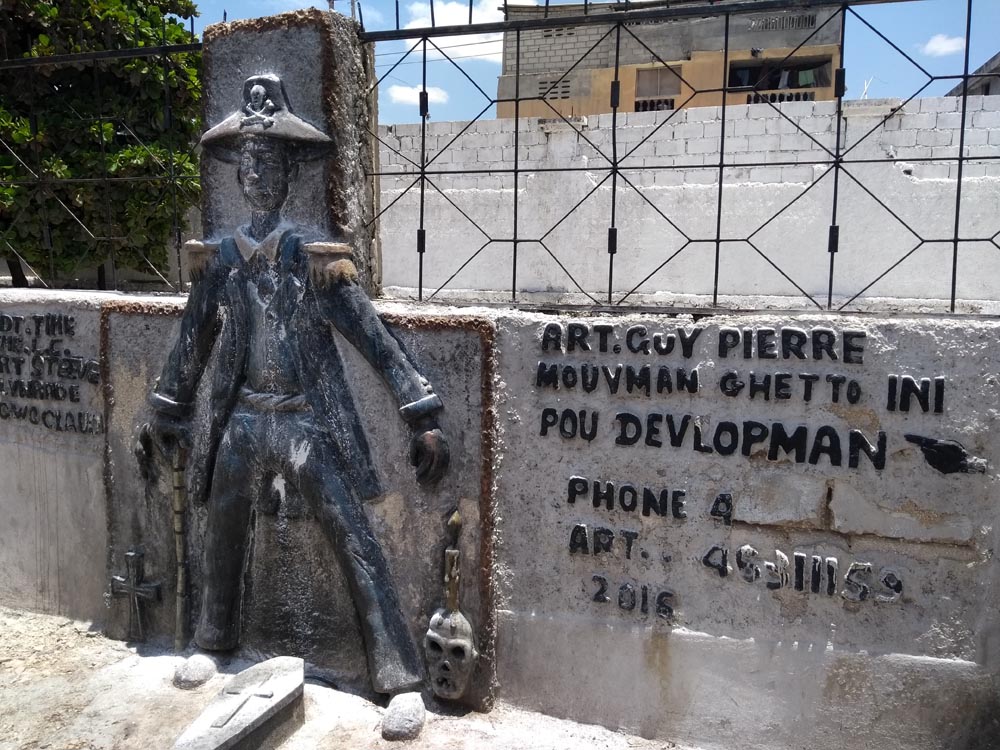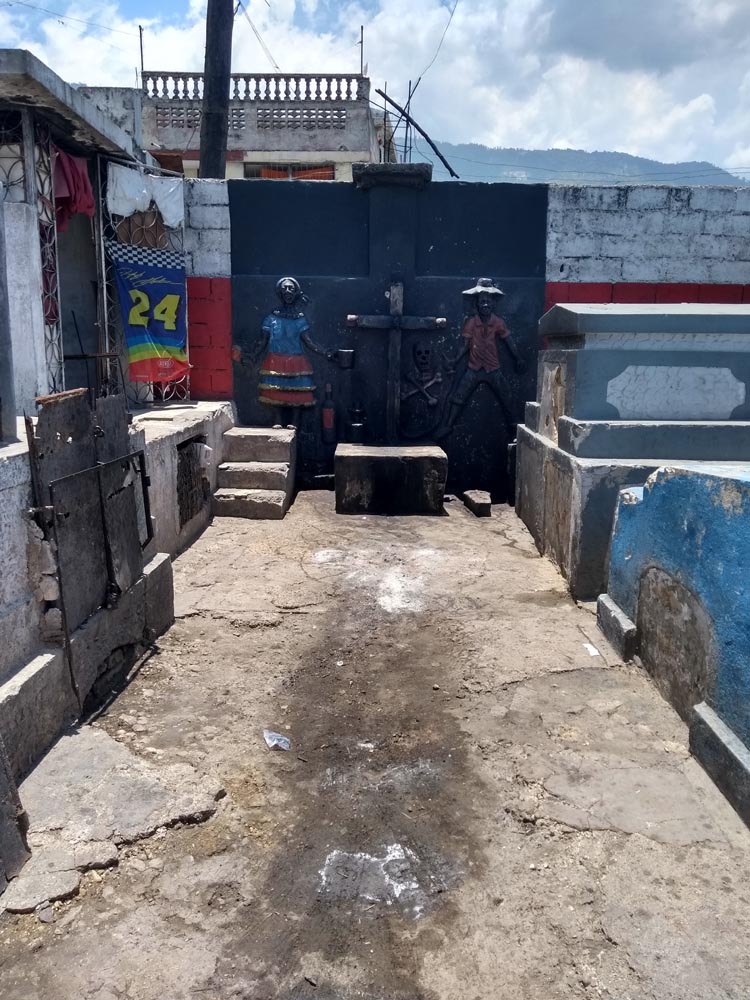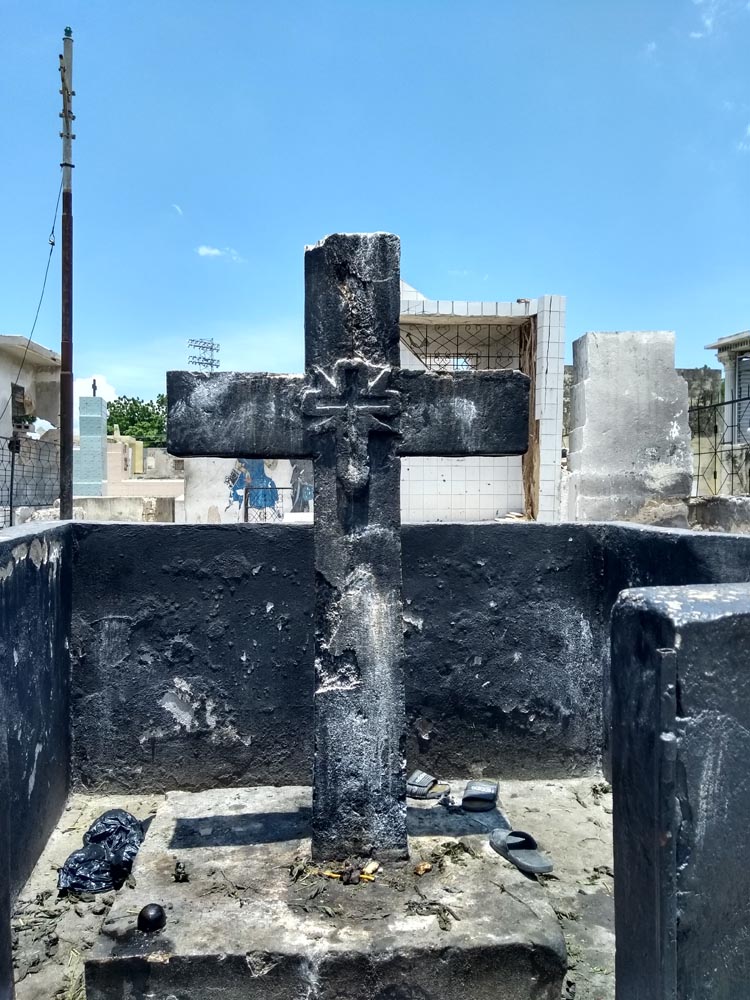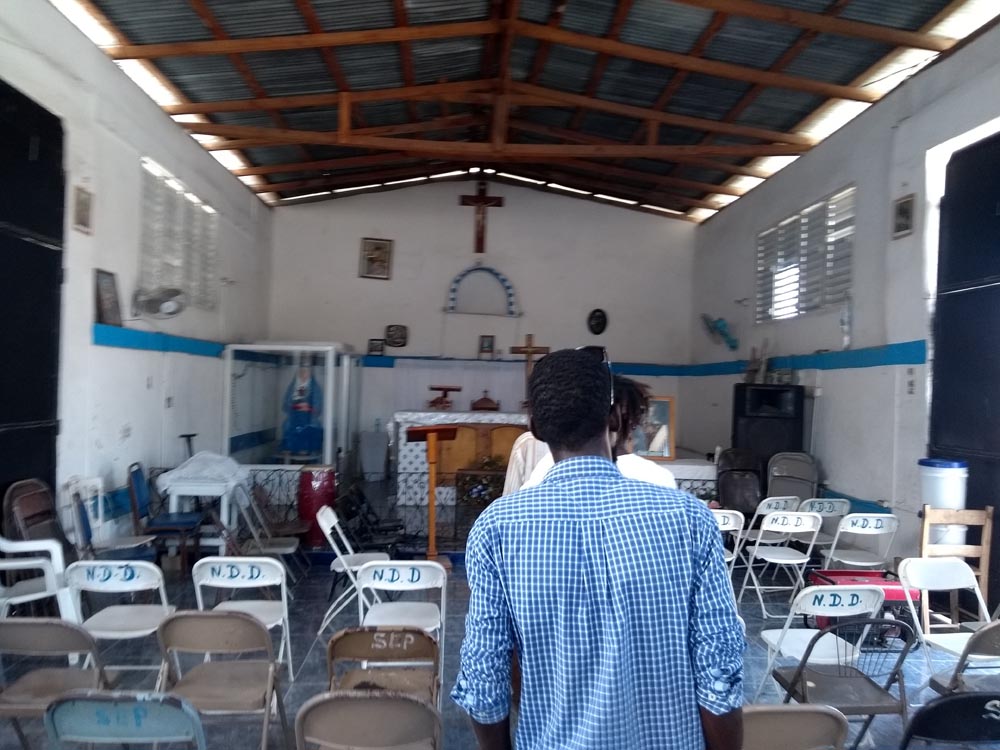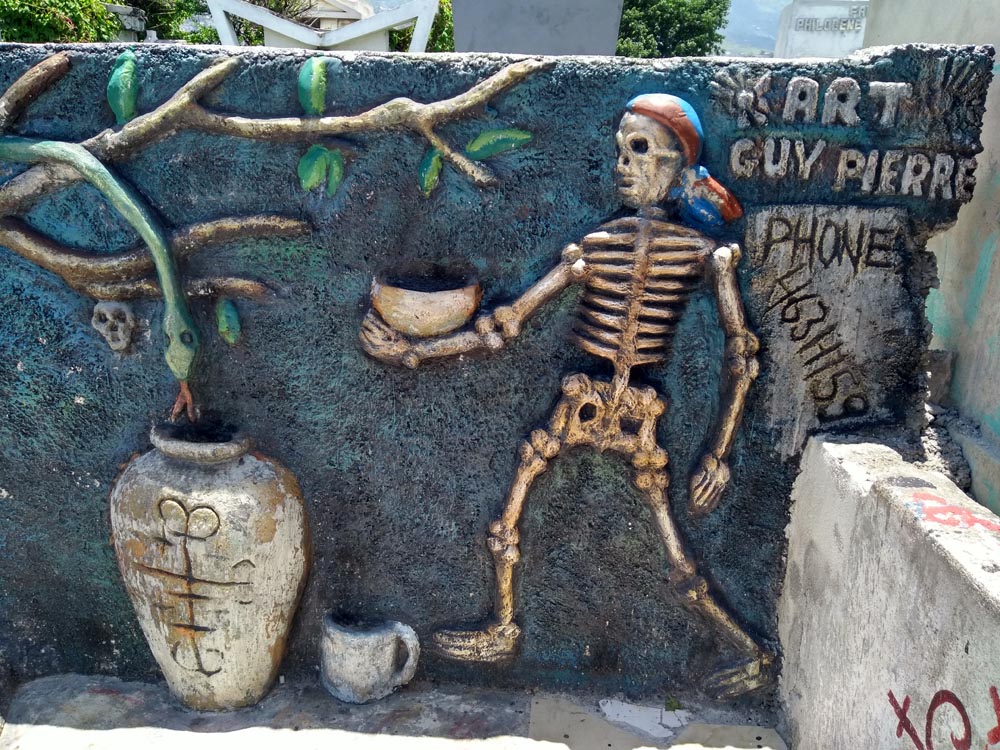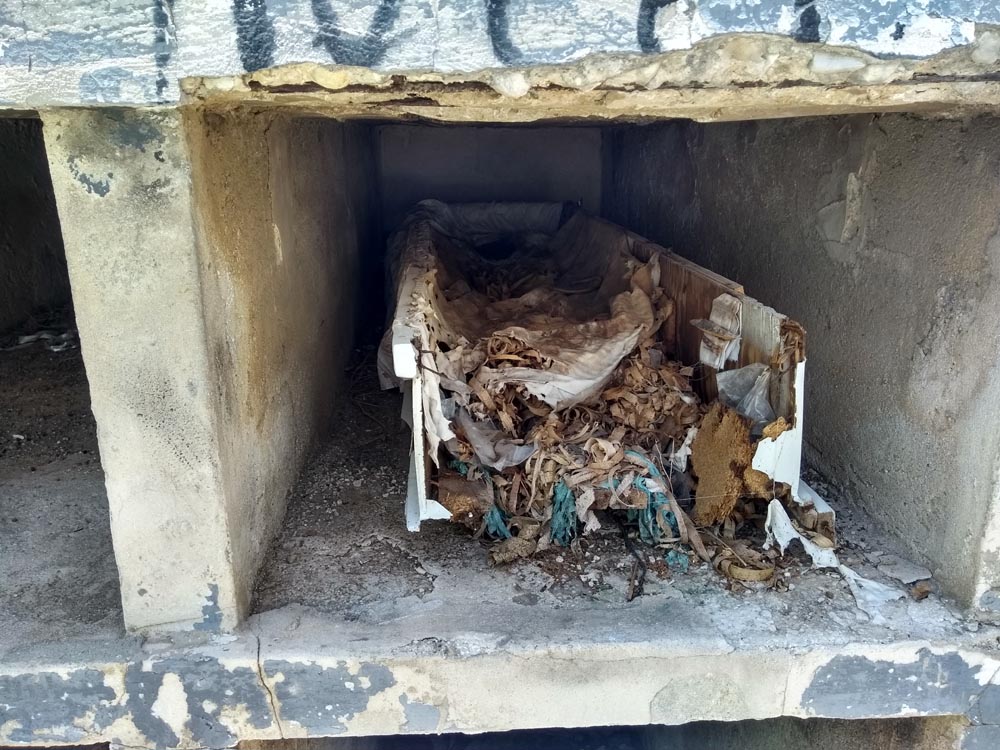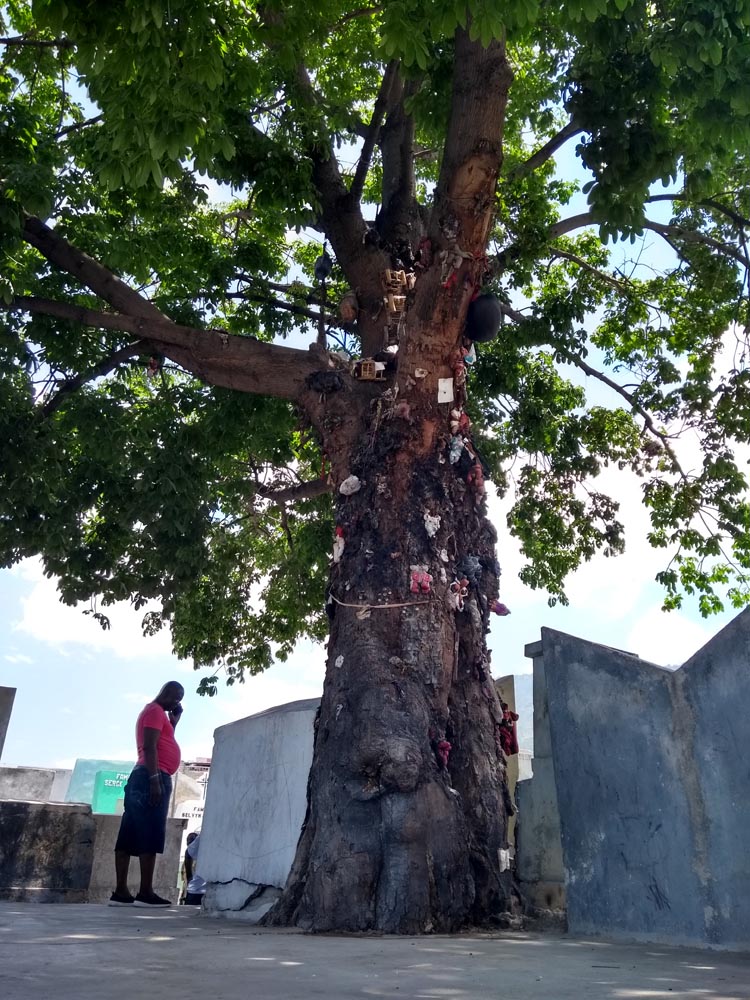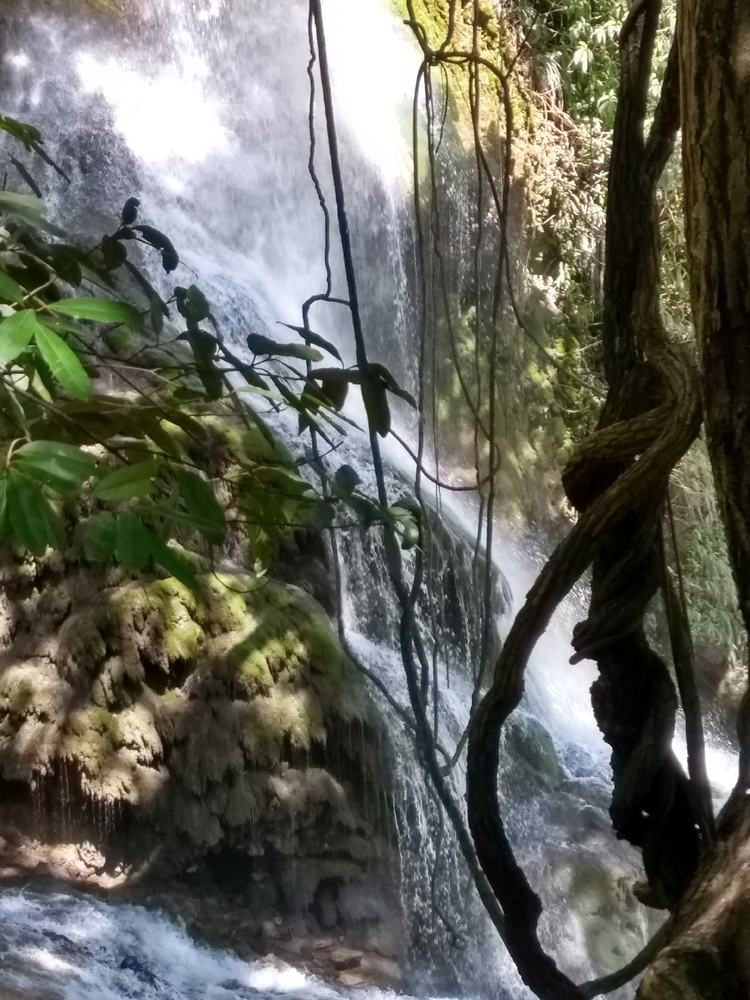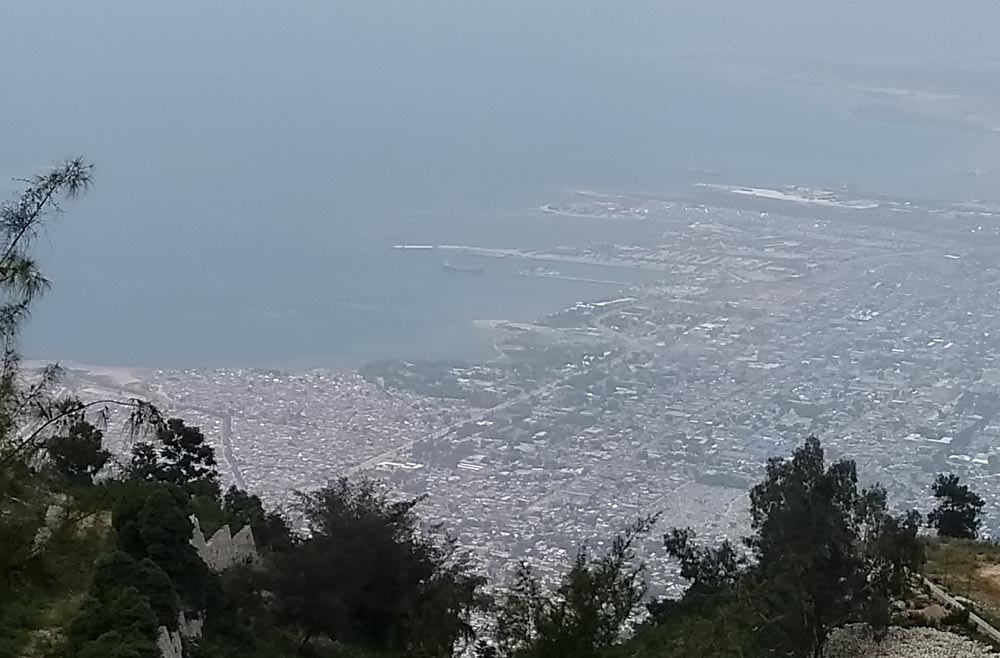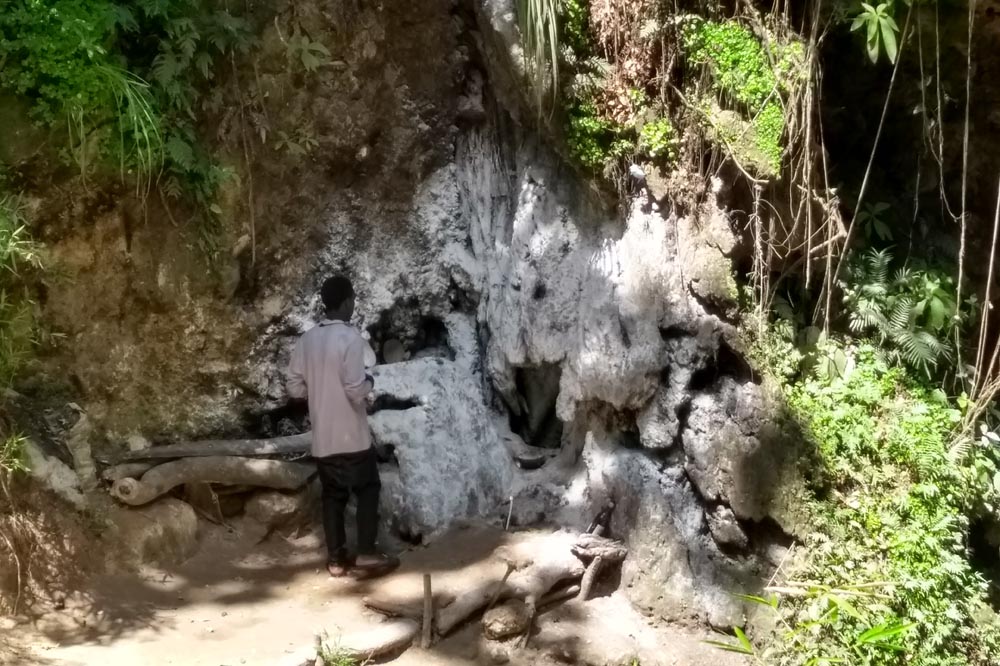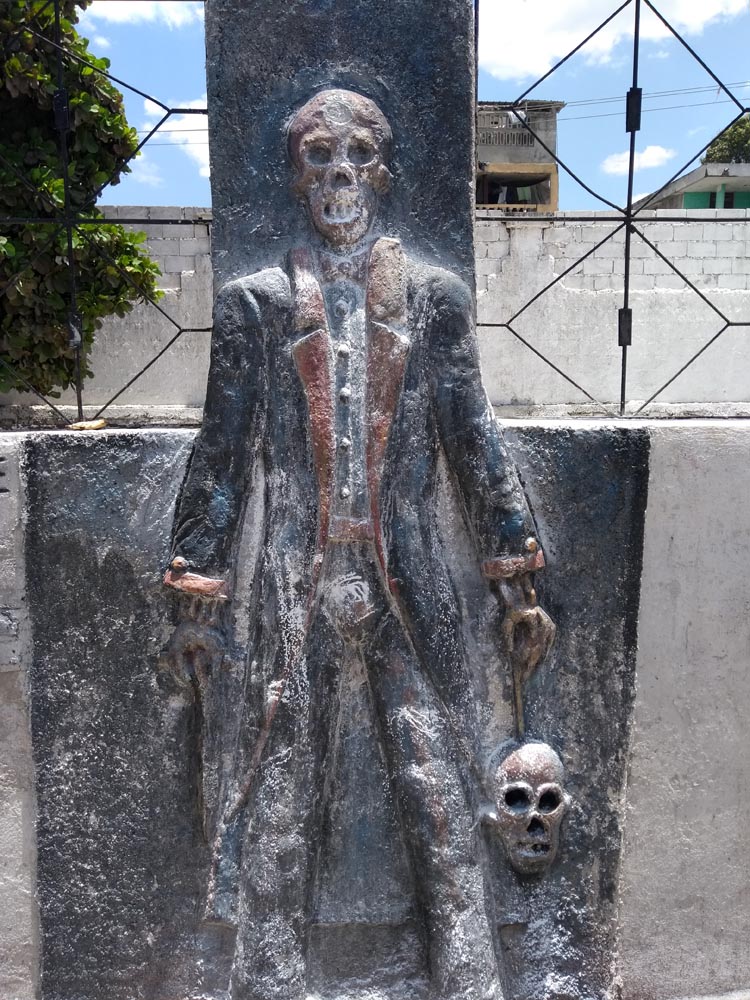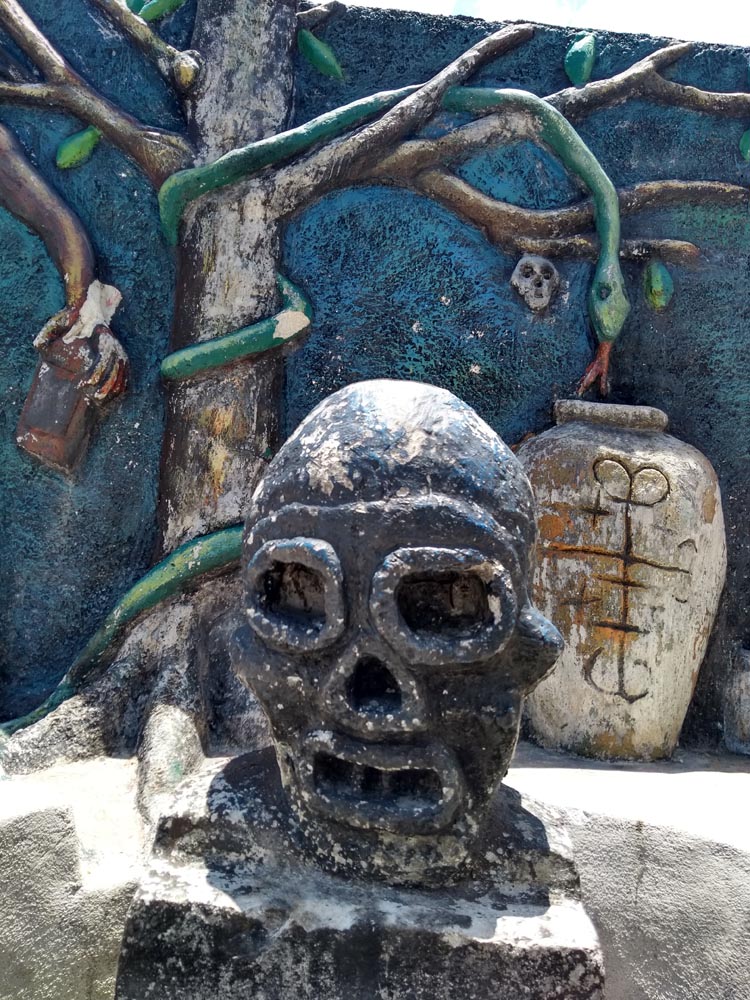Haiti this is part 4 of this series by Dean Karalekas you can read part 1 here, part 2 here and part 3 here.
The dogs, so friendly during the day, barked loudly at my approach to the main building this late at night, threatening to wake the other guests, if there were any other guests. I never saw any.
While the air conditioning was mercifully running when I got back, it was mere moments before it was shut off again. The hotel only runs the aircon for a few hours a day, starting at 9 PM. There are a few brief moments of blackout during the switchover, so I finished my shower by lamplight. I had hoped to catch up on the sleep I had missed, but it was a fitful sleep. The ritual that I had witnessed had left its mark on my imagination, and every half-discernable shape or shadow, in my mind’s eye, was a supernatural being here at the crossroads of the hours come to make a play for my soul.
As it turned out, my late arrival in the wee hours of the morning was in contravention of the hotel’s curfew. I hadn’t known about this policy. The manager had been frantically trying to call me last night, but was unable to reach me. A simple transcription error of my phone number. She gave me a good finger wagging the next morning as I ordered breakfast and caught up on my work, and I promised to be back well before the proscribed hour for the rest of my stay.
Azda and Vlad arrived late in the morning, as we had arranged the night before. Our first stop was the cemetery we had missed yesterday. We were stopped at the gate, the guards telling us that the graveyard was closed to visitors, but it turned out this was just an opening position in the negotiations. Like the Iron Market, you have to hire a guide who will walk you through the sprawling complex, point out sites of interest, and most importantly, get you back out again. In addition to serving as a guide, they function as something of a bodyguard.
Our official Haitian guide/bodyguard was Joseph, a youngish man who spoke a few words of English, and was quite friendly. Our second, unofficial guide who followed along (and was generally tolerated by the first) was named Reginald. Reginald was in his 60s or 70s, and clearly already had a few drinks under his belt. He was more enthusiastic than Joseph, and his antics somewhat distracted from the austerity Haiti
The Grand Cimetière of Port-au-Prince (Haiti) is city in its own right. Mausoleums line the lanes of this colonial-era necropolis like a parody of a suburb in a Tim Burton fever dream. Tiny concrete homes emblazoned with family names, one after the other, did give the impression of a neighborhood. I would later learn that the cemetery did, in fact, become a makeshift home for hundreds of dispossessed victims of the 2010 earthquake. Today, the only (living) residents were goats, chickens, and a few layabouts wiling away the time.
At first I was unsure why Azda was intent on showing this to me. It was interesting, to be sure, and an ideal location for a better photographer than I am. Once we reached the first Vodou shrine, I finally understood: Not only is this the resting place for the city’s dead—including those of some of the nation’s most prominent families—it is also the site of religious rituals that go far beyond mere funerals.
If the Haitian graveyard was akin to a city, we left the safe and orderly grid pattern to wander the labyrinthine alleys, twisting and turning until I was sure I’d lost all sense of direction or how to find my own way back, should that become necessary. Even though I was usually near the last in the order of march, stopping here and there to line up a shot, I noticed that Vlad would inconspicuously find something to occupy his attention just long enough to fall in behind me. I may not have been cognizant of any danger, but then my sense of situational awareness didn’t have a “Haiti” setting, and so I deferred to his better judgment, and was thankful for his vigilance.
Against the far wall of the cemetery was a crude bas relief of a man, dressed in a wide-brimmed hat and red shirt and carrying a whip. To his right stood a carving of a woman in a brightly coloured dress and carrying a mug in one hand and an ason rattle in the other. Next to her was a pair of sculpted bottles, and to him, a skull and crossbones in the familiar pirate-flag configuration. Just in front of them was a large black cross of rough-hewn wood, nails dangerously protruding from its surface. I didn’t know it at the time, but this was a shrine to Baron Kriminel, possibly the most terrifying of the Ghede, and their enforcer.
In life, he was a rapist and murderer, and as a Lwa, he is violent and unpredictable, but if called upon righteously, he can dispense justice to wrongdoers when the justice system on the earthy plane leaves victims unavenged. His very existence forces us to weigh right and wrong; guilty and innocent; good and bad, and how the dividing line between these seeming opposites is sometimes murky in Haiti.
In front of the shrine the ground was charred, evidence of a fire, and Reginald tugged on my sleeve to catch my attention. He pantomimed drums, and flayed his arms about, which I took to mean that this was a place where Haitian Vodou ceremonies were held.
Haiti has many such shrines here, with symbolism I would never understand, not being a Vodouyizan, and which seemed beautiful yet macabre to my foreign eye. A man in military attire; A woman, seated, holding a snake; A skeleton offering a bowl to a serpent coiled in a tree. Next to each bas relief—and each was indeed a work of art—the sculptor carved his name and phone number, presumably as a calling card for future paying commissions.
There were almost as many crypts that had been broken into here—many with bones still visible within—as there were intact. I may have stumbled upon the mysterious source of André’s raw materials. Undecipherable scribbling, as well as many Vèvès, had been painted into the sides of several of the tombs, in what I hoped was just red paint. Pakets were left near the resting places of loved ones, as well as other offerings I couldn’t recognize. In one such case, a crab was hanging from a string, twisting in the breeze, on the sepulcher of a particularly rich family.
Before leaving, Joseph made sure we stopped by a large tree that grew incongruously among the mausoleums. Given what I had seen at last night’s ritual, it made sense that trees would have a sacred meaning in the Vodou belief system: they represent more imminently the World Tree, or axis mundi, as the connective tissue linking the physical realm with that of the sprits. The mapou tree is Haiti’s most venerated tree, and serves as the potomitan at the centre of many an outdoor peristil. There was no mistaking the fact that this tree, in the cemetery, was a sacred place: It was covered in ribbons, pakets, amulets, and other talismans left there by true believers, as sacrifices for their desires and needs. Also attached to the tree were several iterations of the very same style of Vodou dolls I had bought at the Iron Market, here bound together just as the process was described to me, as well as tiny, doll-sized chairs, also a popular tool for keeping a relationship together in the Vodou of Haiti.
As our official guide, it was Joseph who was owed a tip at the end of our tour of the cemetery, much to Reginald’s chagrin. Once again, we boarded Vlad’s motorcycle and merged into traffic on the crowded, potholed streets of Port-au-Prince (Haiti), destined for whatever point of interest Azda deemed worthy of seeing next. We would not make it, however.
The Old Bill had set up a roadblock ahead—not the regular beat cops, mind you: these officers were decked out in SWAT gear: tactical vests, helmets, balaclavas, quick-release holsters, and all manner of cartridge pouches. All in black. Working out of a police interceptor utility vehicle, they were stopping cars and taking names. Vlad tried to deke around them, as the other motorcyclists were doing, but one cop, catching sight of my white (or by now, red) face, ordered him rather emphatically to pull over. He complied and we dismounted. They raised their automatic rifles and trained them on us, demanding to know if we were armed. I raised my shirt to show my beltline: no concealed weapons.
I tried to remain calm … Haiti has come a long way since the bad old days of the Tonton Macoute, and while these guys were clearly paramilitary, surely that sort of thing didn’t go on anymore, I told myself. The head cop wanted to know why I was here, and Azda explained that I was just a tourist. That didn’t seem to placate him, so he demanded my ID. I slowly and deliberately reached into my pocket and pulled out my drivers’ license.
In the interests of discretion, I will refrain from providing too many details about what happened next, or how we got out of it. Suffice it to say, it put a crimp in our schedule for the rest of the day. As a friendly warning to would-be tourists: be sure to carry your passport with you at all times. It may save you a great deal of trouble.
The next day more than made up for the inconvenience of our encounter with the long arm of the law. Azda decided that we had to see the Saut-d’Eau waterfalls—a sacred and beautiful spot that is a pilgrimage destination for adherents to the Vodou religion. Legend has it that the Virgin Mary of Mount Carmel appeared on a palm tree on this site sometime in the mid-19th century, and the 100-foot high waterfalls have since been revered for their healing powers.
The site is host to one of the largest religious festivals on the island, held in mid-July, but people trickle in year-round to bathe in the waters and petition for favours from the Virgin Mary of Mount Carmel, or rather her syncretized Vodou counterpart, the Lwa Erzulie Dantor. It’s only a two-hour drive from downtown Port-au-Prince, but I insisted on several stops for water and smoke breaks. The ride was wracking my body with pain, and the sun was frying my skin. Already starting to peel, I was by this point looking like an extra in a Zombie film. I could use some healing waters right about now.
When we arrived at the site, before walking down to the falls, Azda and Vlad grabbed a bite to eat at a small lunch counter while I made a phone call. There were a number of small stalls set up in the area, as well as kids walking around selling little plastic souvenirs and soap. Before too long I noticed that one of the fellows hanging around the area was dressed like an anthropomorphized cartoon animal, by which I mean that he wore a shirt, but no pants. He was, as the kids say today, straight-up shirt-cocking it. He clearly wasn’t in full possession of his faculties, switching between catatonic stupor and wild flailing, but since the locals seemed to be taking it all in stride, I decided to pay him no mind. Still, it was an odd sight and hence worth mentioning: not so much the man’s blatant exhibitionism, but the blasé attitude of everyone around him.
Once we had paid our entrance fees and hired our guides, we walked down to a change area next to the Saut d’Eau falls. They truly are a sight to behold. We stripped down to our briefs and, aided by the guides, navigated the slippery rocks to enter the falls themselves. There were a few other patrons scattered about the site, enjoying the falls and the scenery: some were clearly there for religious purposes, but most had come to get a striking selfie, or to take some provocative pictures of their girlfriends with the famous falls as a backdrop. We took turns wandering into the sheet of falling water and ritualistically bathing ourselves with small, overpriced bars of soap available at the entrance.
Once under the deluge, I could see why this place persisted as a pilgrimage site. The barrage of water droplets rat-tat-tatting on your head and body was the kinesthetic equivalent of the persistent Vodou drums, and no doubt played a similar role. Indeed: this theory was put to the test as a family of four arrived shortly after us, and stationed themselves a few feet away, under the unrelenting barrage of healing water. The father, son, and mother, or so I took them to be, mostly helped to support grandma as she also stripped down to the waist, and following the rhythm of the falling water, began chanting and swaying.
Before too long, grandma was flailing around in the same manner as the woman I had seen at the Vodou ritual the other night, losing herself in the transcendental experience. This made the job of her family that much harder as they struggled to stop her—and themselves—from falling on the slippery rocks under the unrelenting curtain of water. Our guides, who had been carousing and talking loudly, now stood quietly next to me watching intently, which suggested to me that this probably wasn’t an everyday occurrence. I suggested we should go on our way, and let this family have their privacy, for this was obviously an intensely personal event. They waved off my concerns. And since the rocks were too slick for me to duck out on my own, I was forced to stand there, once again, just a few feet away from a bona fide spirit possession taking place in real time.
I tried to be polite, turning my head to simulate a preoccupation with the sheer majesty of the falls off to my left, all the while pretending not to notice that four feet away, the matriarch of this naked family was currently shaking and screaming and being mounted by a Vodou Lwa. This is exactly the sort of imposition that I had tried to avoid by leaving the ceremony early the other night. The only difference between then and now is that now I was standing in my underwear, soaked to the bone. Clearly, one cannot escape that which is one’s destiny.
There is so much more I could write about Haiti: driving through Cité Soleil; touring Fort Jacques; learning the importance of discarding a bottle and its cap separately. I debated whether even to put pen to paper, as this was a very personal journey and touches upon some very sensitive subjects, In the end, I decided that if even a single person reads this account and decides to travel to Haiti, especially now that the COVOD-19 lockdowns have had such a disastrous effect on tourism, and hence the GDP of this already-poor nation, then it will have been worth it.
At the time of writing, both Haiti and the Dominican Republic are open to tourists. For me, Hispaniola was a place I could wait out the two weeks after leaving Europe and before being allowed to enter the United States, but check: the lockdown rules are constantly changing. It may have been a stop on a much longer journey for me, but it was a treasured experience that will not soon be forgotten.
Now might just be the right time to see Haiti


